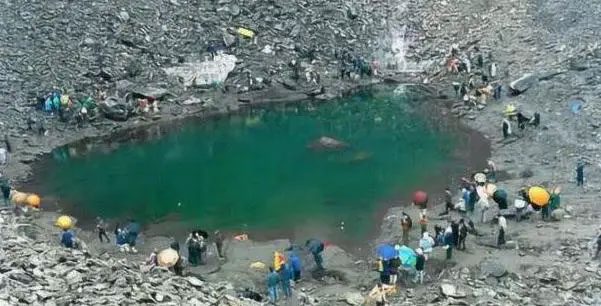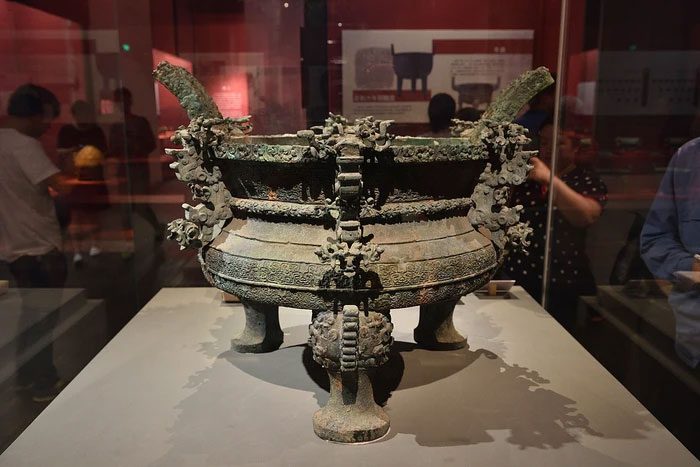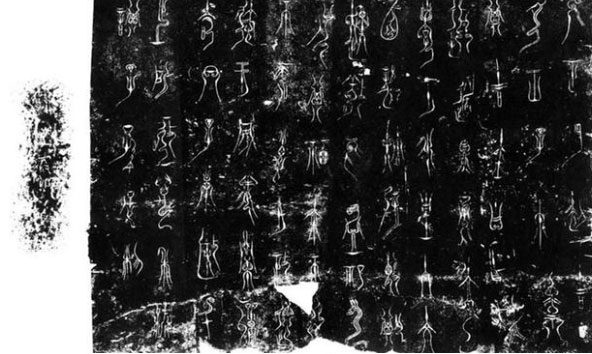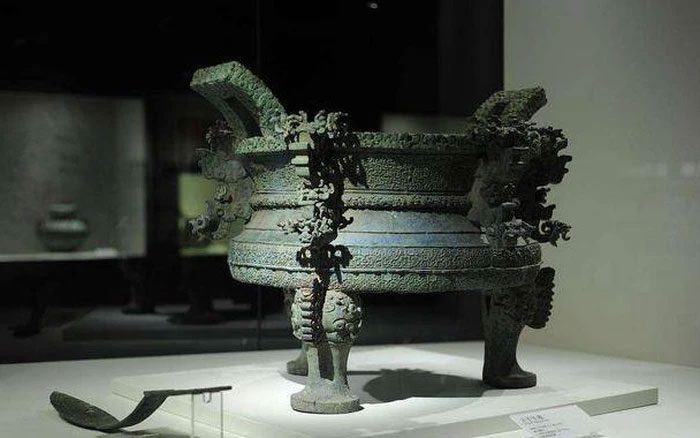The water level of a lake plummeted by 100 meters overnight, leading archaeologists to unexpectedly discover “6 golden dragons.”
In the summer of 1978, severe drought struck the county of Taiyuan in Nanyang City, Henan Province (China). As a result of the drought, a local reservoir suddenly receded by 100 meters overnight. This phenomenon astonished many, particularly as the lakebed was exposed.
Children from a nearby village, noticing the dry lake, rushed over to play in the remaining mud and water. While they were playing, a boy suddenly discovered something and called for help. The adults ran over to dig around, revealing a hint of green bronze. They suspected they had found some artifacts and immediately reported it to the authorities.

The drought-exposed lake inadvertently revealed treasures thousands of years old.
Experts quickly arrived at the site and cordoned off the area. Upon investigation, they preliminarily concluded that there was an ancient tomb beneath the lake. With the water level low due to the drought, the experts began excavating. They unearthed numerous cultural relics, among which they were surprised to find 6 golden dragons. This discovery thrilled the experts.
After cleaning off the outer layers of soil and rock, the 6 golden dragons were revealed in their entirety. It turned out they were attached to a three-legged bronze vessel. The vessel was relatively intact and not significantly damaged. The six golden dragons were intricately crafted, resembling lifelike forms. After appraisal, experts preliminarily concluded that this was a highly valuable treasure.

The golden dragon is a symbol representing those of extremely noble status. (Illustrative image).
Who was the owner of this treasure adorned with dragon motifs?

This bronze vessel was a possession of a noble of the State of Song, the son of King Zhuang of Song, one of the Five Hegemons during the Spring and Autumn period.
On this treasure, besides the 6 golden dragons, experts also discovered several inscriptions. After translating them, they identified the true owner of the tomb. The individual was Lord Wu of the Spring and Autumn period. He was the son of King Zhuang of Song (? – 591 BC), the 25th king of the State of Song, a vassal of the Zhou dynasty. During his reign (613 BC – 591 BC), the State of Song flourished, which made King Zhuang of Song’s name one of the Five Hegemons of the Spring and Autumn period.
Given the noble status of the tomb’s owner, the bronze vessel, which dates back approximately 2,500 years, naturally became highly valuable. This bronze vessel is a national treasure that stands 76 cm tall and has a diameter of 66 cm, featuring intricate carvings of 6 dragons, adorned with exquisite decorations.
In ancient times, bronze vessels were often regarded as important ritual items and symbols of the status of the elite.

Many bronze artifacts were found in the ancient tomb.
Due to the high status, the family of Lord Wu buried a large quantity of accompanying goods in the tomb after his death. The massive bronze vessel adorned with 6 golden dragons was just one of them.
What surprised experts was that the method of crafting the golden dragons on this three-legged bronze vessel was a lost wax casting technique that has been forgotten since the Spring and Autumn period.
According to experts, this method was highly advanced, capable of producing treasures with extremely complex structures. Unfortunately, it has been lost for many years. Despite significant advancements in modern technology, it still cannot replicate or create versions of these ancient treasures.

The inscriptions on the bronze vessel are of an ancient Chinese script. Thanks to these inscriptions, experts identified the owner of the tomb.
The bronze vessel is a national treasure and is currently displayed and preserved at the Henan Provincial Museum (China).
On the lid, neck, and inner wall of the vessel, there are 84 characters inscribed. The content of these characters is written in seal script to commemorate the ancestors and praise the contributions of Lord Wu, thereby educating future generations.

This treasure is currently on display at the Henan Provincial Museum (China).
Experts are impressed by the craftsmanship of artisans from approximately 2,500 years ago, which reached a top level at that time.
In addition to the aforementioned bronze vessel, archaeologists also found 6 other vessels with similar shapes and structures, but differing in size and weight, within the ancient tomb submerged in the lake.


















































